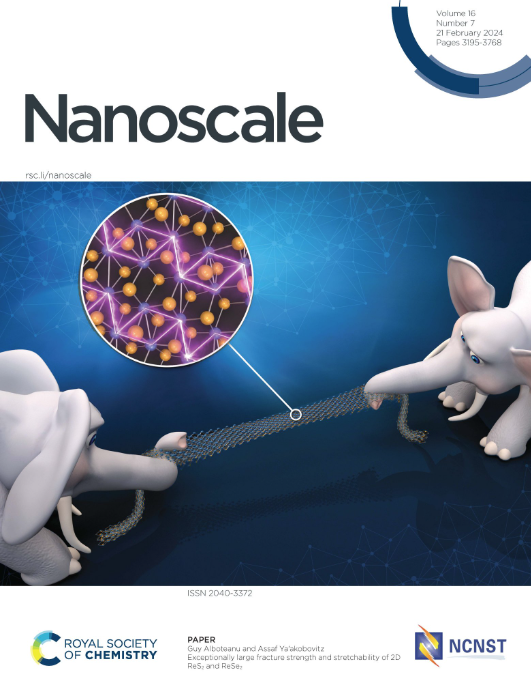Sliding ferroelectricity in bilayer phosphorus-analogue compounds: mechanisms and applications
IF 5.8
3区 材料科学
Q1 CHEMISTRY, MULTIDISCIPLINARY
引用次数: 0
Abstract
Two-dimensional (2D) van der Waals (vdW) ferroelectric structures have attracted much attention due to their superior properties and broad application prospects. For many systems, although there have been plenty of studies on the monolayer ferroelectrics, the bilayer or multilayer ferroelectricity has been rarely investigated. Here, we focus on the sliding ferroelectricity of bilayer α- and β-phase MX (M = Si, Ge, Sn and Pb; X = S, Se and Te) structures. Bilayer α-SiS is found to exhibit a quite large out-of-plane polarization that is not present in the monolayer configuration. Interestingly, the polarization of bilayer β-MX shows a periodic variation with the change of X atoms, where the charge transfer is found to play an important role. Furthermore, both strain and multilayer stacking are found to be able to effectively modulate the polarization. With those structures, field-effect transistors (FETs) are constructed and their performances are found to satisfy the International Technology Roadmap for Semiconductors (ITRS) requirements for the year of 2028. Moreover, four kinds of logic operators are proposed and also demonstrated to operate quite well, showing great application potential. We believe our findings will be quite beneficial to the development of sliding ferroelectrics.双层类似磷化合物中的滑动铁电性:机制和应用
二维范德华(vdW)铁电结构由于其优越的性能和广阔的应用前景而备受关注。对于许多体系,虽然单层铁电性的研究较多,但对双层或多层铁电性的研究却很少。在这里,我们重点研究了双层α-和β相MX的滑动铁电性(M = Si, Ge, Sn和Pb;X = S, Se和Te)结构。发现双层α- si具有相当大的面外偏振,这是单层结构所没有的。有趣的是,双层β-MX的极化随X原子的变化呈周期性变化,其中发现电荷转移起重要作用。此外,发现应变和多层叠加都能有效地调制极化。利用这些结构,构建场效应晶体管(fet),并发现其性能满足2028年国际半导体技术路线图(ITRS)的要求。此外,还提出了四种逻辑运算符,并证明了它们的运算效果良好,具有很大的应用潜力。我们相信我们的发现将对滑动铁电体的发展非常有益。
本文章由计算机程序翻译,如有差异,请以英文原文为准。
求助全文
约1分钟内获得全文
求助全文
来源期刊

Nanoscale
CHEMISTRY, MULTIDISCIPLINARY-NANOSCIENCE & NANOTECHNOLOGY
CiteScore
12.10
自引率
3.00%
发文量
1628
审稿时长
1.6 months
期刊介绍:
Nanoscale is a high-impact international journal, publishing high-quality research across nanoscience and nanotechnology. Nanoscale publishes a full mix of research articles on experimental and theoretical work, including reviews, communications, and full papers.Highly interdisciplinary, this journal appeals to scientists, researchers and professionals interested in nanoscience and nanotechnology, quantum materials and quantum technology, including the areas of physics, chemistry, biology, medicine, materials, energy/environment, information technology, detection science, healthcare and drug discovery, and electronics.
 求助内容:
求助内容: 应助结果提醒方式:
应助结果提醒方式:


